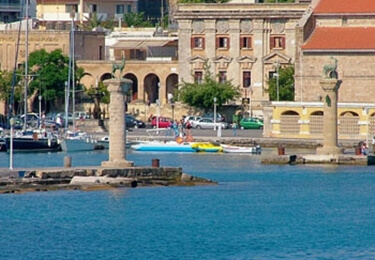
The largest of the Dodecanese, Rhodes has become an important regional center, thanks to its location, climate and natural attractions.It is known as the island of the Sun. The myth says that it was born of the union of Helios (the sun god) and nymph Rhoda; no wonder why the island is blessed with 300 days of sunshine per year!
It was first inhabited in the Neolithic era. In 1309, it fell into the hands of the Knights of St. John, it became again the center of power, symbolized by its magnificent medieval town and the imposing castle and palace of the Grand Masters.
The landscape is widely varied, from rocky around the coast to forested in the interior. There's also a variety of interesting places (apart from the archaeological sites) scattered all over the island.
The capital of the island, also called Rhodes, occupies the northernmost tip. There are actually three cities on this site - modern, ancient and medieval. The modern town has a cosmopolitan character, many late-20th-century buildings and hotels. The ancient town, was founded in 408 B.C. All that is left of it today is the ruins of the temples of Zeus, Athena Poliados and Apollo, the Stadium, the Gymnasium and the Theatre.

